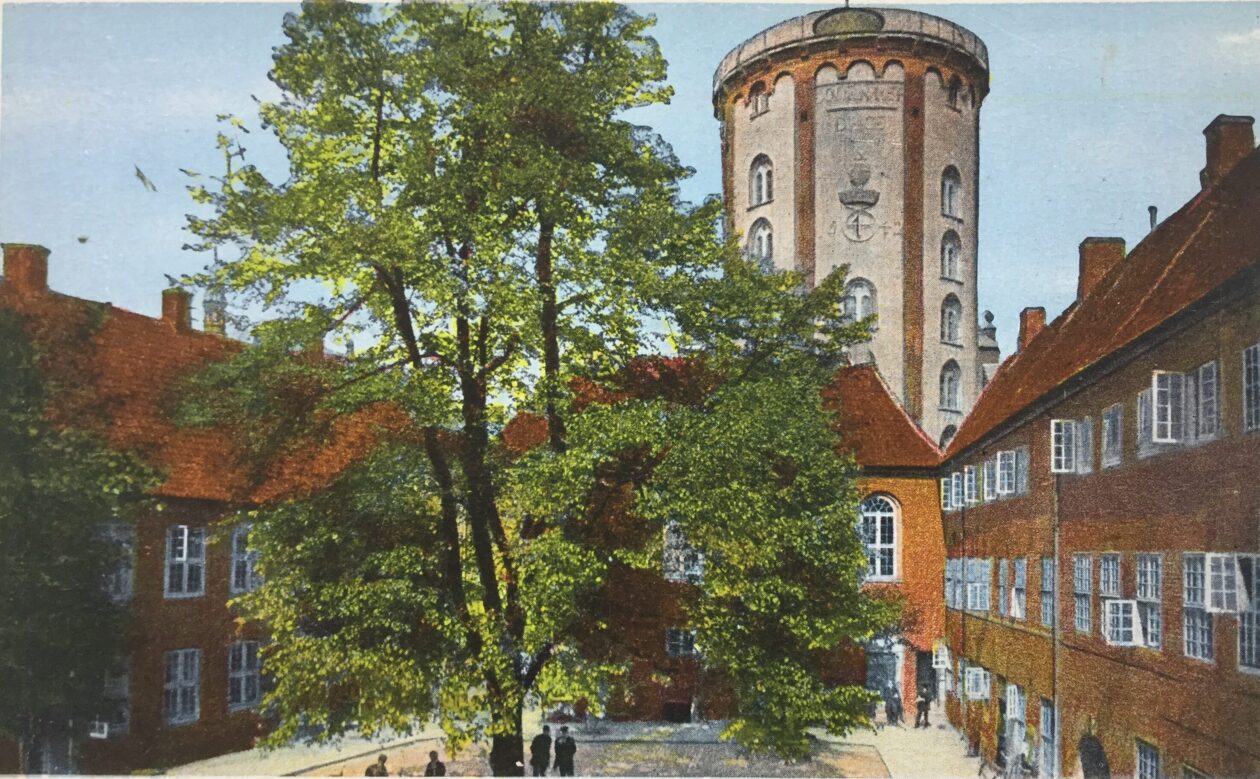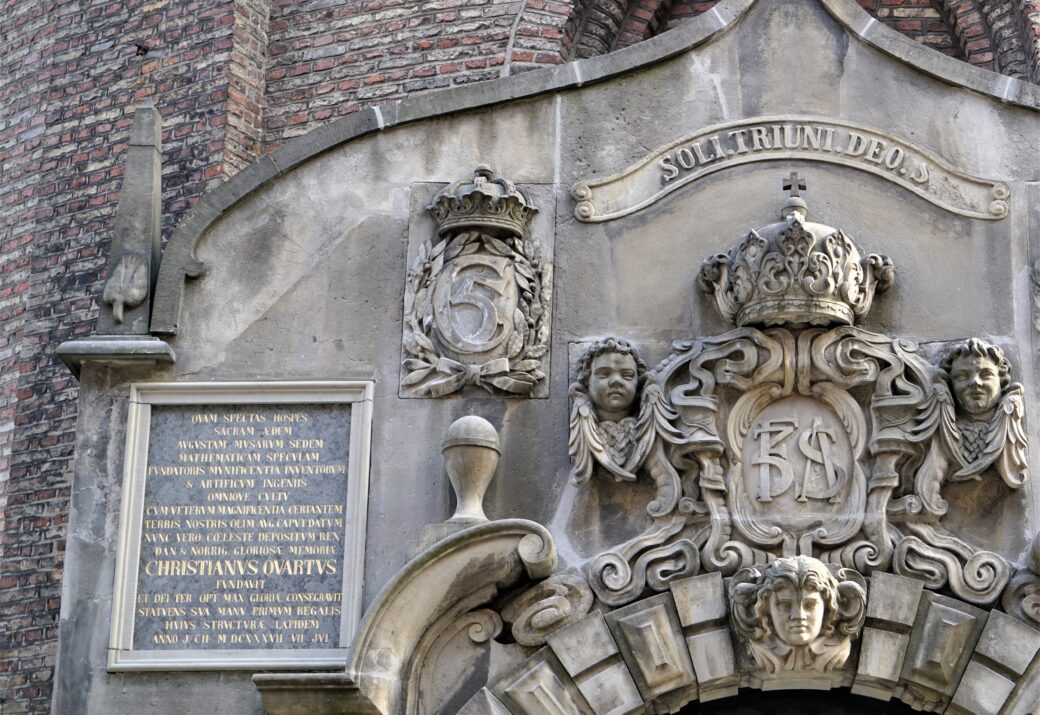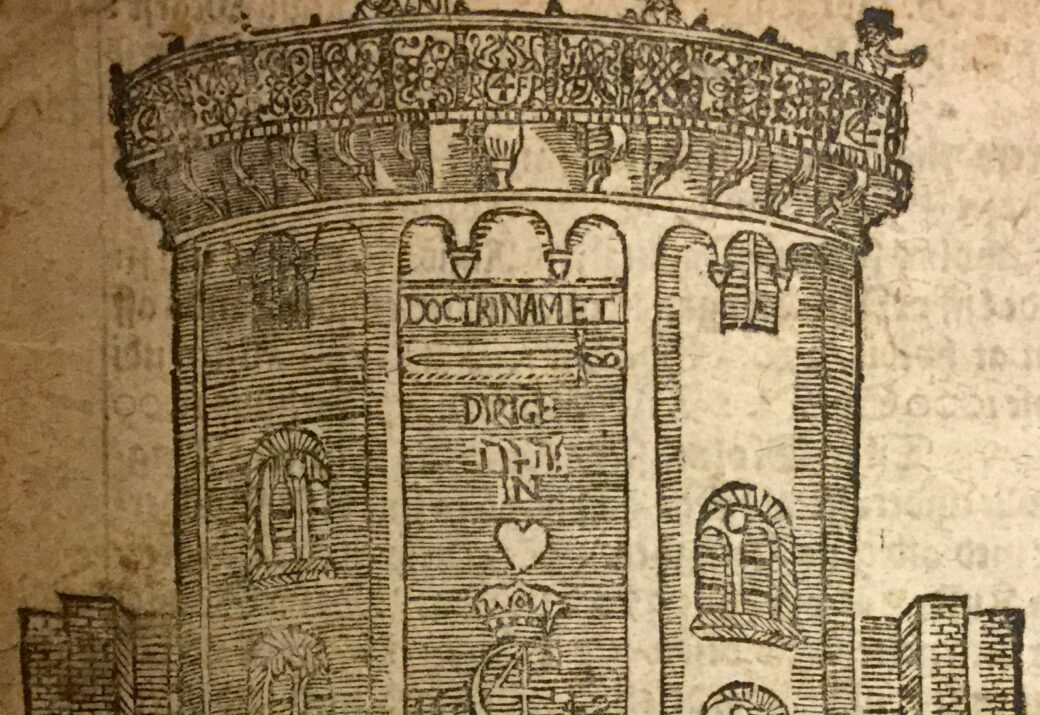This website uses cookies so that we can provide you with the best user experience possible. Cookie information is stored in your browser and performs functions such as recognising you when you return to our website and helping our team to understand which sections of the website you find most interesting and useful.
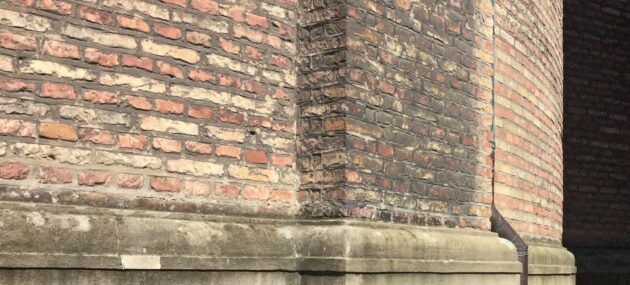
Masonry in Royal Colours
What colour is the Round Tower? Well, if one looks at slightly older depictions of Christian IV’s iconic edifice in the middle of the King’s Copenhagen, it was mostly grey. And the images need not be that old. The grey cement plaster, which was applied to large parts of the tower’s surface last time during architect N. S. Nebelong’s restoration in the years around 1870, was not removed until 1950.
However, a small part of the tower’s exterior, more precisely the so-called lesenes, that is the flat vertical bands between the window areas, already stood with exposed bricks before 1950. And by having a closer look at them, one could see that the Round Tower is built in masonry of alternating yellow and red bricks. Just like the adjoining Trinitatis Church, whose outer walls Nebelong did not cover.
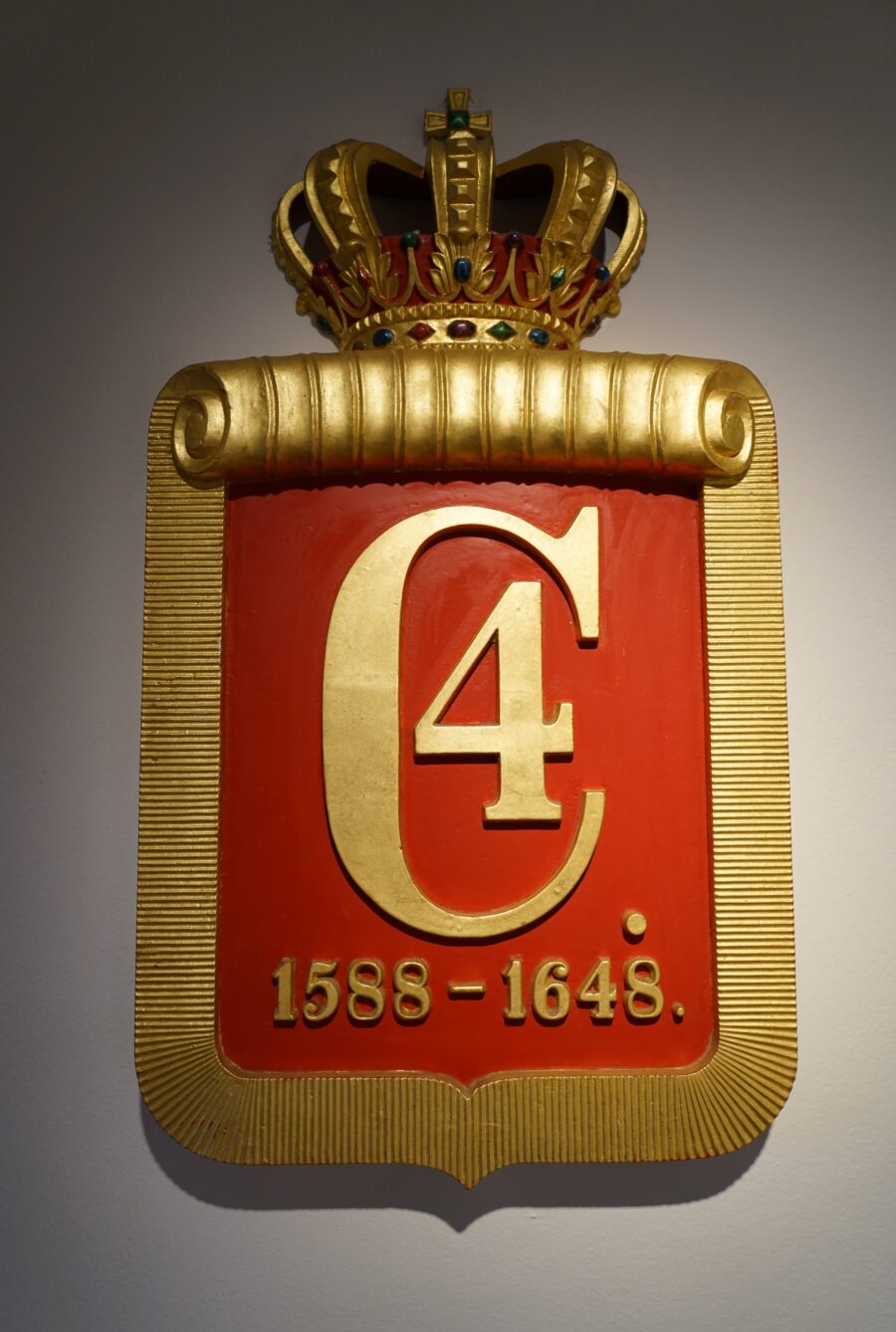
The Coronation of Christian IV
It looks beautiful, but that is not the only reason for this play of colours. For the two colours in fact denote the House of Oldenburg, which originate from Northern Germany. Its members have ruled Denmark since 1448 when Christian I came to the Danish throne, and still do, though today it is via the House of Glücksburg, a cadet branch of the House of Oldenburg. Thus the Oldenburg colours are still part of the official royal coat of arms. And it is far from the only place one could encounter them.
It was, for instance, possible to catch sight of them when Christian IV was crowned in 1596. When some of the most distinguished guests, the margraves of Brandenburg, had to be greeted outside of Copenhagen, the King and a large entourage came riding, escorted by the Royal Trabant Guard, which consisted of a hundred men all dressed in yellow damask jerseys, red velvet pants with yellow silk cords and red velvet hats with yellow feathers.
When the actual coronation was finished, the King rode from the Church of Our Lady to Copenhagen Castle, and on his way went through a triumphal arch that was set op for the occasion on Amager Square. Four figures with gold-plated shields and helmets appeared on the corners of the arch, two of which bore small flags or banners in the Oldenburg colours. The figures were even so cleverly made that they could bend their head towards the King as he approached the arch.
Yellow Ceiling and Red Rafters
Hence, it did not come out of the blue that red and yellow bricks were chosen for the Round Tower and the rest of the Trinitatis Complex. The colours were meant to indicate that this was a royal edifice. And it was not just the case outside, but also inside where the University Library was located on the floor above Trinitatis Church, accessible through the Spiral Ramp.
The library was inaugurated in 1657 on the 7th of July, the same date on which the foundation stone of the Round Tower was laid in 1637, but apparently the decor was already arranged a few years prior to that. As it appears from Jens Lauridsen Wolf’s book Encomion regni Daniæ (Praise of the Danish Realm) from 1654, the Oldenburg colours were dominant here too. He describes the hall in the following way:
“On top of the church’s vault is a chamber/ as long and wide as the church/ with many windows/ a ceiling coloured in yellow/ and with red rafters”.
“But symbolism, including colour symbolism, is rarely unambiguous”
Another red item was a long table located in the middle of the hall, at which library users could sit and study the books in detail. At least some of the bookcases along the sides of the hall also had the same red colour.
The King’s Extramarital Son
It is hardly wrong to assume that the yellow and red colours used indoors as well as outdoors were part of the royal family’s staging of power, just as the royal building was. For was the King not as outstanding as his tower, was his rule not as solid as its walls, which bore the age-old colours of the princely family, and did he not guard the church as did the tower in the planned Trinitatis Complex?
But symbolism, including colour symbolism, is rarely unambiguous and the colours could also be used to send messages with a slightly modified content. That was for instance the case with a building that was constructed around the same time as the Round Tower: the manor house of Ulriksholm, which is located between Odense and Kerteminde in the island of Funen.
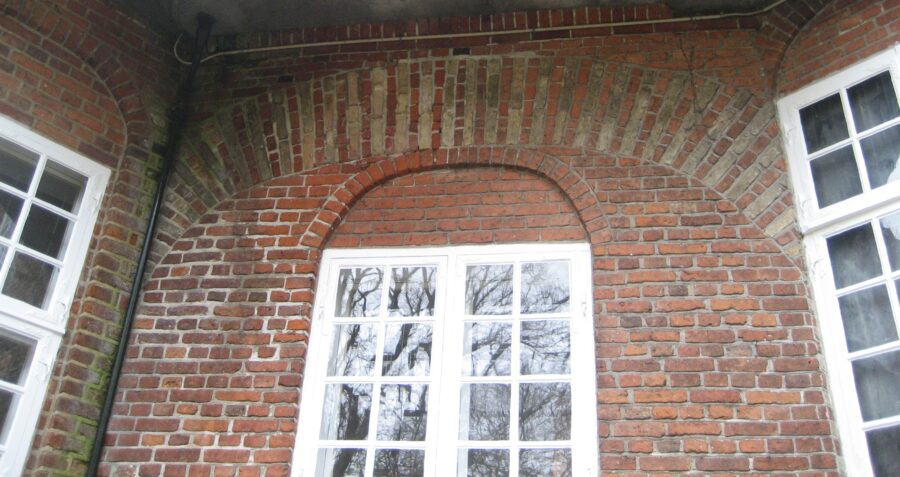
Ulriksholm got its name when Christian IV gave the estate to his 15-year-old son Ulrik Christian Gyldenløve, who was born out of wedlock by the maid Vibeke Kruse. The King had already built part of the current main building, and when Ulrik Christian Gyldenløve took over he continued with the current east wing, which was finished in 1646 – four years after the finishing of the Round Tower.
This particular east wing was also originally built with alternating red and yellow bricks. For even though Christian IV took good care of his extramarital son, it was only beneficial to put his (half)royal lineage in stone for everybody else to see.
In the 1860s N. S. Nebelong restored Ulriksholm and although he would soon cover the Round Tower with cement plaster, he left the play of colours on the manor house. When Ulriksholm was restored again some decades later, however, the yellow course of bricks were replaced with dark red ones. Except in one place where the connection to the Round Tower is still apparent.
